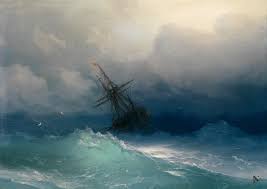composition
HISTORY OF LANDSCAPE GENRE DEVELOPMENT (part 1)
 Translated from French, the word “landscape” (paysage) means “nature”. This is what the genre is called in fine art, the main task of which is the reproduction of natural or human-modified nature.
Translated from French, the word “landscape” (paysage) means “nature”. This is what the genre is called in fine art, the main task of which is the reproduction of natural or human-modified nature.
In addition, the landscape is a specific work of art in painting or graphics, showing the viewer nature. The “hero” of such a work is a natural motif or a natural motif invented by the author.
Elements of the landscape can be found already in cave art. In the Neolithic era, primitive masters schematically depicted rivers or lakes, trees and stone blocks on the walls of caves. On the Tassilin-Ager plateau in the Sahara, drawings were found with scenes of hunting and driving herds. Continue reading
ABOUT AQUARIAN PAINTING TECHNIQUE (part 5)
 This is confirmed by laboratory tests. Today, there are world-famous manufacturers who honor the traditions of the best manufactories, they have earned the high trust and respect of professionals. Information on the quality of the paint used can always be found by marking on its packaging. Knowing some of the laws of mixing, studying the behavior of paints of different companies and work experience will suggest the preferred choice of paints.
This is confirmed by laboratory tests. Today, there are world-famous manufacturers who honor the traditions of the best manufactories, they have earned the high trust and respect of professionals. Information on the quality of the paint used can always be found by marking on its packaging. Knowing some of the laws of mixing, studying the behavior of paints of different companies and work experience will suggest the preferred choice of paints.
Another stereotype is related to paper quality. You can read a lot of interesting things from the history of paper production and its application. Without delving into history and moving on to practical recommendations, let’s say that a modern watercolorist has a wide selection of professional paper. Continue reading




